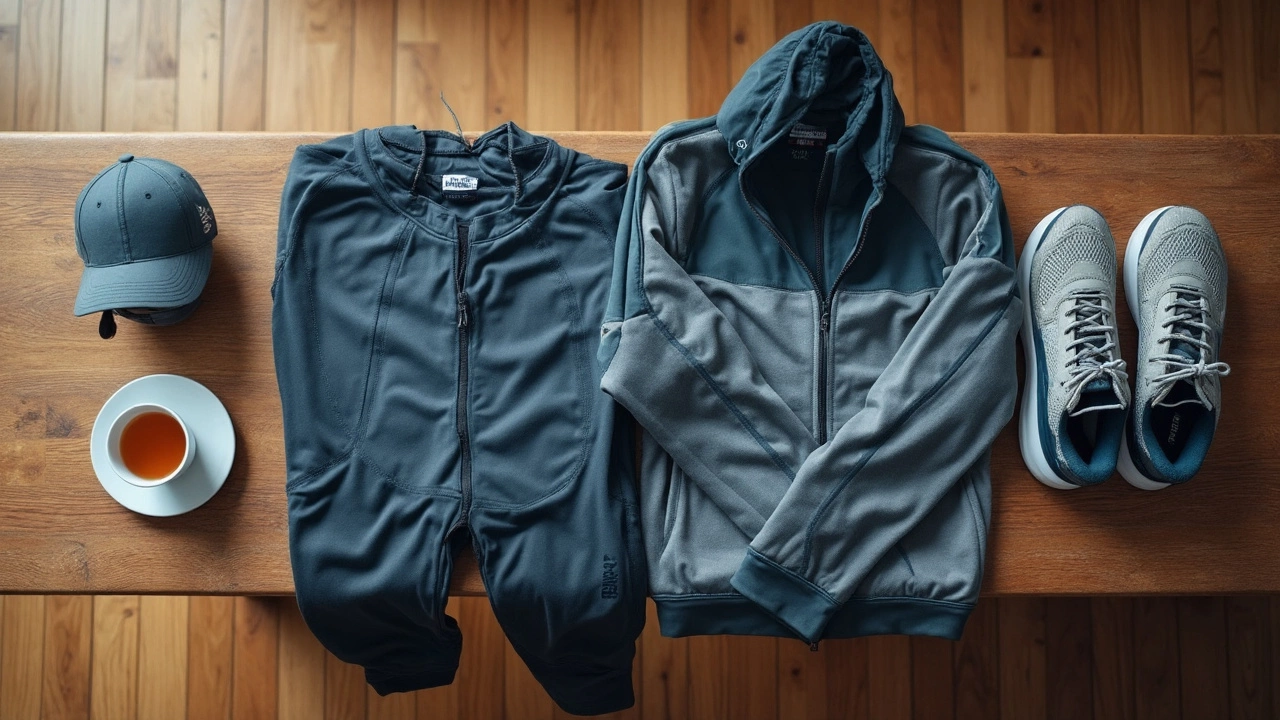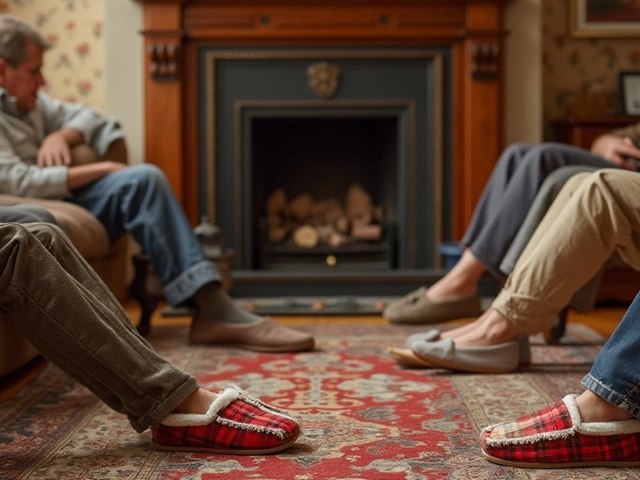Walk through any clothing store or search for workout gear online, and you’ll bump into activewear and sportswear plastered everywhere. At first glance, both look like clothes for the gym or a run in the park. But are they just fancier words for the same thing? Not really.
Activewear and sportswear actually serve different purposes, even though the lines blur these days. Activewear is made to handle not only your sweat sessions but also errands, coffee runs, or even hanging out with friends. Sportswear sticks closely to actual athletic performance, usually designed for a specific sport or serious training—think soccer jerseys, tennis skirts, or running tights.
Confused at what to grab for your next yoga class or hike? You’re not alone. More brands keep mixing the two, marketing stretchy pants as everything from "athleisure" to "training essentials" just to fill up shopping carts. Let’s clear up where the boundaries are and which kind of gear actually helps you feel comfortable and confident—on and off the field.
- Getting the Terms Straight
- Fabric and Function: What Sets Them Apart
- Where to Wear: Everyday Life vs Performance
- How to Choose: Practical Tips
Getting the Terms Straight
Walk into a store and it feels like "activewear" and "sportswear" are just slapped onto any stretchy top or pair of joggers. But if you really look, the terms do mean different things. Here’s how to tell them apart without overthinking it.
Sportswear is the original. This basically covers clothing made for sports or specific physical activities. You’ll see stuff like team jerseys, soccer shorts, or track jackets. These clothes usually follow strict rules about what you can wear in a game or on the field, and a lot of times, the design is tied to tradition or team colors. Olympics uniforms? Classic sportswear. Even old-school polo shirts and baseball caps got their start as sportswear before people started wearing them casually.
Activewear is like sportswear’s chill cousin. It’s built for movement, but not just for sports. The goal is comfort anytime you’re active, not only when you’re sweating buckets. If you’ve ever worn leggings for a long flight or a moisture-wicking shirt to walk your dog, you’ve picked activewear. This stuff wants to look good and feel right whether you’re at the gym or a grocery store. The rise of “athleisure” turned activewear into streetwear—now you’ll spot work-appropriate tops or pants made from techy, flexible fabrics everywhere.
This mix-up isn’t by accident. Brands often use the labels for marketing, especially as more people want everyday clothes that double as workout gear. But knowing the difference saves you from buying the wrong stuff, especially if you need clothes for real training.
- Sportswear: Focuses on performance in a specific sport or workout. Form, function, and usually some tradition.
- Activewear: Meant for both movement and casual comfort. Think yoga pants that look decent out at brunch.
Bottom line: sportswear is about the sport, and activewear is about the activity—no matter what that activity is.
Fabric and Function: What Sets Them Apart
Activewear and sportswear look similar, but their real difference comes down to the fabrics and what they’re built to do. When you pick up a pair of leggings or a training shirt, what you’re really holding is a combo of science and style picked for specific uses.
Sportswear is all about top performance. The fabrics here aim for moisture control, durability, and sometimes compression. Think of polyester, spandex, or nylon blends—these wick sweat, dry fast, and don’t lose shape during tough moves. Some high-end brands even add tech coatings to fight odor or give UV protection. If you’re running a marathon or playing soccer in the heat, these materials matter. Ever notice how soccer jerseys feel almost like thin plastic? That’s on purpose—they barely hold sweat and help muscles breathe.
Activewear is more about comfort and flexibility across the whole day. While it sometimes uses similar materials (like spandex or cotton-poly blends), activewear may also add softer fibers, looser fits, or fun colors. Sweat performance matters, but less than for pure sportswear. Your yoga hoodie is meant to feel just as good in the studio as it does on your couch. That’s why activewear can include everything from moisture-wicking tanks to joggers lined with fleece—stuff that lets you move but doesn’t scream "I just worked out."
Wondering about typical fabric choices? Here’s a handy comparison:
| Type | Common Fabrics | Main Features |
|---|---|---|
| Sportswear | Polyester, Nylon, Spandex | High sweat-wicking, quick-dry, durable, compressive options |
| Activewear | Cotton blends, Bamboo, Modal, Spandex | Soft, stretchy, comfy, decent breathability, stylish prints |
Function goes deeper. Sportswear is usually cut for the sport: racerback tanks for mobility, mesh panels for airflow, reinforced knees for slides. Activewear often includes more relaxed shapes and fewer seams for all-day wear. This is why your gym tights sometimes feel like a second skin, while your loungewear joggers are just plain cozy.
- If you’re going to sweat buckets or need your gear to survive rough training, lean toward true sportswear.
- If you want to look and feel good while shopping, traveling, or relaxing—and maybe work in a quick light workout—activewear fits the job.
Smart shoppers flip the tag and check the fabric percent. More nylon or polyester generally means better sweat control. Softness, natural fibers, or unique prints? That’s usually activewear territory. In the end, matching the right gear to your plans saves comfort, style, and sometimes even the embarrassment of sweaty patches showing up where you don’t want them.

Where to Wear: Everyday Life vs Performance
If you’ve ever shown up to brunch still in your leggings or joggers from working out, you’re wearing activewear the way it was meant to be worn. Activewear is all about blending into your day—so you can hit the gym, walk the dog, then run errands without changing. Styles usually lean into comfort and versatility. They don’t just look like workout clothes; they’re designed for sitting in a coffee shop or strolling around the mall without feeling out of place. Big brands like Lululemon, Gymshark, and Outdoor Voices have made this stuff standard streetwear for a lot of folks, not just gym rats.
On the other hand, sportswear is laser-focused on performance. You’ll usually see it at games, in competitions, or on the field and track. Each piece is designed for the demands of a specific sport. For example, moisture-wicking soccer jerseys keep athletes dry during tough matches. Compression shirts offer muscle support for runners. And basketball shorts give the right range of motion for high jumps. It’s not really meant for lounging or casual settings—unless you're a fan sporting a jersey at a game to show some support.
To get how these categories actually fit into regular life, check out this quick comparison:
| Category | Main Use | Popular Items | Worn For |
|---|---|---|---|
| Activewear | Both light exercise & casual wear | Leggings, joggers, hoodies | Yoga, gym, errands, relaxing |
| Sportswear | Sport-specific training & competition | Soccer jerseys, tennis skirts, cleats | Matches, races, team practice |
Here’s a tip: If comfort and flexibility matter for your all-day schedule, lean toward activewear. When you need something to help you perform better in a specific sport, sportswear is built for that job. Don’t just follow trends—pick gear that fits your actual routine. And don’t sweat it if you wear your running shorts to the store. Lots of people do.
How to Choose: Practical Tips
There’s no need to grab the priciest gear off the rack. The best pick depends on what’s actually useful for you and your routine. Here’s how to break it down so you get what fits, feels good, and does the job you want it to do.
Activewear is great if you want something flexible you can wear everywhere—gym to couch to lunch. But for serious training or sports, classic sportswear is usually the safer bet since it was built from the start with performance in mind.
- Think about your day: If you move between meetings, errands, and the gym, grab activewear with sweat-wicking fabric and a bit of stretch. If you’re prepping for a 5K, go for fitted sportswear specifically made for running.
- Read the tag: Polyester, nylon, and spandex are winners for moisture control. Cotton feels comfy but traps sweat, so avoid it for tough workouts.
- Check for extras: Pockets, mesh panels, and flat seams bump up comfort. Pockets matter when you’re going out; mesh is a game-changer in hot weather.
- Don’t size down: Your gear should never pinch or pull. Whether it’s leggings or shorts, make sure you can squat, bend, and twist without feeling trapped.
Here’s a quick chart comparing key features of activewear and sportswear so you can spot what matters to you:
| Feature | Activewear | Sportswear |
|---|---|---|
| Main Purpose | Everyday + light exercise | Sport-specific, high-intensity use |
| Best Fabrics | Polyester, spandex, cotton blends | Technical fabrics (polyester, nylon, spandex) |
| Moisture Control | Moderate | High |
| Durability | Good for daily wear | Best for repeated high-impact use |
| Style Range | Trendy, versatile | Sport-focused, often uniform-based |
One more tip—don’t get tricked by trends. Sometimes, the most hyped-up leggings are just expensive lounge pants. Stick to reviews, check return policies, and—if you can—try stuff on before committing. If it works for your life, not just your workout, you’re on the right track.





